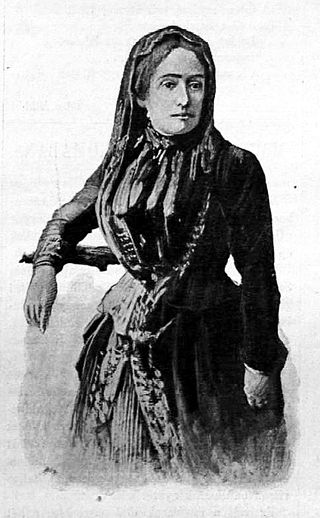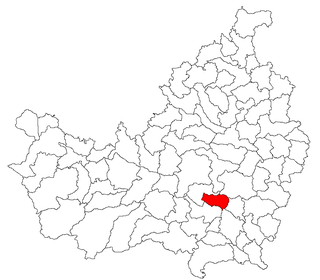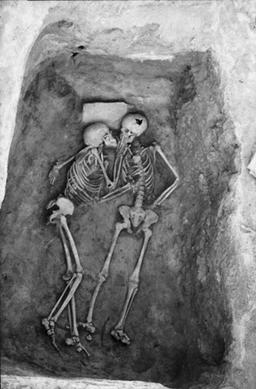Related Research Articles

Transylvania is a historical and cultural region in Central and Eastern Europe, encompassing central Romania. To the east and south its natural border is the Carpathian Mountains and to the west the Apuseni Mountains. Broader definitions of Transylvania also include the western and northwestern Romanian regions of Crișana and Maramureș, and occasionally Banat. Historical Transylvania also includes small parts of neighbouring Western Moldavia and even a small part of south-western neighbouring Bukovina to its north east. The capital of the region is Cluj-Napoca.

Mantua is a city and comune in Lombardy, Italy, and capital of the province of the same name.

Cluj-Napoca, or simply Cluj, is the second-most populous city in Romania and the seat of Cluj County in the northwestern part of the country. Geographically, it is roughly equidistant from Bucharest, Budapest and Belgrade. Located in the Someșul Mic river valley, the city is considered the unofficial capital of the historical province of Transylvania. For some decades prior to the Austro-Hungarian Compromise of 1867, it was the official capital of the Grand Principality of Transylvania.

Aiud is a city located in Alba County, Transylvania, Romania. The city's population is 21,307 (2021). It has the status of municipiu. The city derives its name ultimately from Saint Giles (Aegidius), to whom the first church in the settlement was dedicated when built.

Avram Iancu Cluj International Airport is an airport serving the city of Cluj-Napoca, Romania. Initially known as Someșeni Airport, it is located 9 km (5.6 mi) east of the city centre, in the Someșeni area, which is now within the Cluj-Napoca city limits. The airport is named in honour of Romanian revolutionary Avram Iancu.
Osteology is the scientific study of bones, practised by osteologists. A subdiscipline of anatomy, anthropology, and paleontology, osteology is the detailed study of the structure of bones, skeletal elements, teeth, microbone morphology, function, disease, pathology, the process of ossification, and the resistance and hardness of bones (biophysics).

Zsófia Torma was a Hungarian archaeologist, anthropologist and paleontologist.
Roméo et Juliette: de la Haine à l'Amour is a French musical based on William Shakespeare's play Romeo and Juliet, with music and lyrics by Gérard Presgurvic. It premiered in Paris on January 19, 2001. The production was directed and choreographed by Redha, with costumes by Dominique Borg and settings by Petrika Ionesco. The producers were Gérard Louvin, GLEM, and Universal Music. ! Since then, the musical has been performed in Verona, Rome, Canada, Antwerp, London, Amsterdam, Budapest, Szeged, Moscow, Vienna, Bucharest, Seoul, Pusan, Taipei, Monterrey, Japan, Hong Kong, Shanghai and Portugal and has been translated into several languages, including Dutch, Italian, Hungarian, Russian, English, German, Spanish, Romanian, Japanese, Korean, Portuguese, and Slovak.

The Lovers of Teruel is a romance story that is alleged to have taken place in 1217 in the city of Teruel (Aragón).

Porolissum was an ancient Roman city in Dacia. Established as a military camp in 106 during Trajan's Dacian Wars, the city quickly grew through trade with the native Dacians and became the capital of the province Dacia Porolissensis in 124. The site is one of the largest and best-preserved archaeological sites in modern-day Romania. It is 8 km away from the modern city of Zalău, in Moigrad-Porolissum village, Mirsid Commune, Sălaj County.

Aiton is a commune in Cluj County, Transylvania, Romania. It is composed of two villages, Aiton and Rediu (Rőd).

Mihai Viteazu is a commune in Cluj County, Transylvania, Romania. It is composed of three villages: Cheia (Mészkő), Cornești (Sinfalva), and Mihai Viteazu.

The Lovers of Valdaro, also known as the "Valdaro Lovers", are a pair of human skeletons dated as approximately 6,000 years old. They were discovered by archaeologists at a Neolithic tomb in San Giorgio near Mantua, Italy, in 2007. The two individuals were buried face to face with their arms around each other, in a position reminiscent of a "lovers' embrace".
Adrian Andrei Rusu is a researcher in Romanian medieval archaeology. He is also a researcher at the Institute of Archaeology and Art History in Cluj-Napoca.
The history of Cluj-Napoca covers the time from the Roman conquest of Dacia, when a Roman settlement named Napoca existed on the location of the later city, through the founding of Cluj and its flourishing as the main cultural and religious center in the historical province of Transylvania, until its modern existence as a city, the seat of Cluj County in north-western Romania.

The Vasile Pârvan Institute of Archaeology is an institute of the Romanian Academy, located in Bucharest, Romania and specialized in prehistory, ancient history, classical archeology and medieval history. Since 1999, the director of the institute is the historian and archeologist Alexandru Vulpe, a member of the Romanian Academy. The institute is located in Macca house, on Henri Coandă street, no. 11, Bucharest.

The remains of Richard III, the last English king killed in battle, were discovered within the site of the former Grey Friars Priory in Leicester, England, in September 2012. Following extensive anthropological and genetic testing, the remains were reinterred at Leicester Cathedral on 26 March 2015.

The Hasanlu Lovers are a pair of human remains found at the Teppe Hasanlu archaeological site, located in the Naqadeh in the West Azerbaijan Province of Iran. Around 800 BCE, the city of Hasanlu, located in north-western Iran, was destroyed by an unknown invader. Inhabitants were slain and left where they fell. In 1973, the lovers were discovered by a team of archaeologists from the University of Pennsylvania led by Robert H. Dyson.
The Embracing Skeletons of Alepotrypa are a pair of human skeletons dated as approximately 5,800 years old. They were discovered by archaeologists in the Alepotrypa cave in Laconia, Greece. The pair were dated to 3,800 BCE and DNA analysis confirmed that the remains belong to a man and woman who died when they were 20 to 25 years of age.

The Lovers of Modena are a pair of human skeletons discovered in 2009 by archaeologists in present-day Modena, Italy. The two skeletons were buried with their hands interlocked and are believed to have been buried between the 4th and 6th century CE. Originally it was assumed that the two were composed of a male and a female, but upon scientific analysis of enamel peptides by the University of Bologna it was confirmed that the skeletons belong to two males. The pair are now on display at the Civic Museum of Modena.
References
- 1 2 "Buried Couple Found Holding Hands - Archaeology Magazine". www.archaeology.org. Retrieved 2019-11-25.
- 1 2 Davis, Carlo (2013-04-22). "LOOK: Romanian Romeo and Juliet Buried Hand In Hand". HuffPost. Retrieved 2019-11-25.
- ↑ Lugli, Federico; Di Rocco, Giulia; Vazzana, Antonino; Genovese, Filippo; Pinetti, Diego; Cilli, Elisabetta; Carile, Maria Cristina; Silvestrini, Sara; Gabanini, Gaia; Arrighi, Simona; Buti, Laura (2019-09-11). "Enamel peptides reveal the sex of the Late Antique 'Lovers of Modena'". Scientific Reports. 9 (1): 13130. Bibcode:2019NatSR...913130L. doi:10.1038/s41598-019-49562-7. ISSN 2045-2322. PMC 6739468 . PMID 31511583.
- ↑ "Romanian archaeologists uncover medieval skeletons holding hands". io9. 25 April 2013. Retrieved 2019-11-25.
- ↑ "Romanian archeologists uncover Romeo & Juliet: medieval couple buried together with hands clasped". Romania Insider. 21 April 2013. Retrieved 2019-11-25.
- ↑ Worthington, John. "Skeletons of medieval 'Romeo and Juliet' found buried holding hands | Abroad in the Yard" . Retrieved 2019-11-25.
- ↑ "Skeletons holding hands unearthed in Romania". Archaeology Wiki. 2013-04-24. Retrieved 2019-11-25.